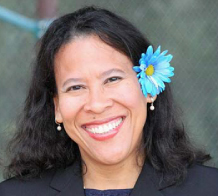Permission to Pause

There is a fine balance between the traditions that we wish to keep in our independent schools and the push of innovation that encourages us to seek new heights. New technologies, methodologies of teaching, and fierce competition from other educational establishments urge us to ever more rapid pacing to accomplish our goal—to do more with less, and do it faster. Very few within our institutions are unaffected by these changes and as a result, we see increased signs of stress from our constituents, which must be addressed at all levels.
Entering Sea Crest School as its new Head four years ago, with the vision of moving our school from good to great, we set five major strategic initiatives, which included new curricula in mathematics, character education, health & wellness, innovation lab and technology. Additionally, we introduced an employee professional development and performance evaluation system and underwent our re-accreditation. The faculty, staff, administration, and trustees rose to the challenge and the school thrived. There was an important thing to note, however. For all the goodwill, professionalism and sheer joy that was present within the school, the pace was unsustainable.
My personal realization came one summer morning when my husband said to me that whilst he would continue to support me fully, we could not go through another year of my being all consumed with my job. From the time I rose in the pre-dawn mornings to the time I went to bed, school had become the only topic of conversation and thought. He called me an iDrone, permanently welded to e-mail. The board expressed concern about my burnout and I became aware that if this was happening to me, it was most likely occurring with the administrators, faculty and staff. Ironic though it was, Sea Crest needed another initiative.
The Sea Crest Faculty/Staff Health & Wellness Program grew from conversations and discussions with faculty/staff regarding ways that we could mitigate the stress of the fast pace without losing the momentum and quality we had gained. We changed our 7-day pre-service schedule from being packed with workshops and meetings to incorporate time for mindfulness moments (e.g. yoga class, mindfulness through art, beach walking, playing a pick-up game) and extended periods of classroom preparation time that were free of administrator-scheduled meetings.
Mindfulness moments have been woven into the fabric of our school—whether in the invocations that open each of our faculty/staff and board meetings or the centering breathing of our pupils at the start of all-school assemblies. Teachers begin various portions of their day—first thing in the morning, following the recess, after lunch, etc.—with these moments such as mindful breathing, yoga, reflection, and meditation. These activities can be as short as two minutes long and rarely take more than 15. The teachers spearheaded their own initiative and instituted monthly faculty/staff lunch potlucks. We also agreed that during the school year, whilst we endeavor to respond to e-mails within 24 hours of receipt, we are not compelled to answer them after 5pm on a weekday or during the weekends. My holiday e-mail responses begin with a statement that Sea Crest is encouraging our faculty/staff to enjoy time with our loved ones. This gives the expectation that messages may not be responded to as quickly as when school is in session.
At Sea Crest, we found that communicating the benefits of our health & wellness initiative to parents was essential. At our Mid-Year Address, we began with having the parents participate in a 5-minute chair yoga exercise that was led by a teacher. The health & wellness program was then presented as a curricular evolution similar to the innovations we were instituting in our mathematics, character education, technology, and innovation lab. The school-wide emphasis on health & wellness is beneficial at all levels. Pupils are responding well; we observe this in their calmer behavior and many parents have mentioned that their children are taking these practices home.
On a personal note, getting an entire day of “me time” remains a struggle. A Head’s position is not one that easily affords significant lengths of relaxation time. I do, however, set aside a daily hour for meditation, prayer and exercise, and a weekly afternoon of indulgence. What works well for me is a glass of bubbly, the occasional massage, a good book, walk in the woods, supper with my family, or pretty much any form of chocolate. The importance is not on the activity; rather, it is that we give ourselves permission to take the time to pause. We must normalize daily, weekly, monthly routines of self-care and resist the pressure to be always bound to our over-filled schedules. We must realize that we cannot be on top of our game—knowledgeable, professional, empathetic and composed—if we are not ourselves centered. We must stop seeing de-stressing time as an indulgence and rather, see it as a necessity for the long-term health of each other and our institutions.
 Dr. Pernambuco-Wise: Dr. Pernambuco-Wise is the Head of Sea Crest School in Half Moon Bay, California. She has presented at numerous conferences including NAIS, CAIS, NCAIS, The Heads Network, TABS, and OESIS on topics such as online/blended learning, leadership, governance, boarding school life, school transformation, and full-service schools. She is a faculty member of NAIS’ Fellowship for Aspiring Heads and is the Vice-President for Region V on the Council for The Heads Network.
Dr. Pernambuco-Wise: Dr. Pernambuco-Wise is the Head of Sea Crest School in Half Moon Bay, California. She has presented at numerous conferences including NAIS, CAIS, NCAIS, The Heads Network, TABS, and OESIS on topics such as online/blended learning, leadership, governance, boarding school life, school transformation, and full-service schools. She is a faculty member of NAIS’ Fellowship for Aspiring Heads and is the Vice-President for Region V on the Council for The Heads Network.
